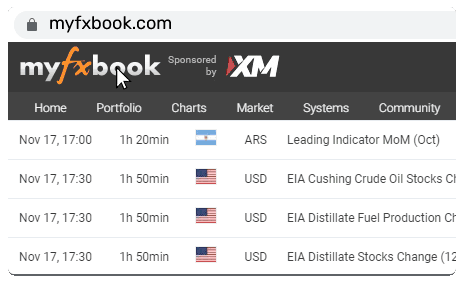The Fed's Surprise Larger Rate Cuts Loom—What This Means for the U.S. Dollar

The U.S. economy in 2024 is navigating through a transitional phase. The moderate deceleration observed in the second half of the year is not entirely unexpected, given the cumulative impact of tight monetary policy over the previous quarters. Key indicators like GDP growth, consumer spending, and industrial production suggest that while the economy is not in recession, it is certainly cooling off. The Federal Reserve's aggressive rate hikes over the past year have successfully dampened inflation but at the cost of slowing economic momentum.
The labour market, which has been remarkably resilient, is now beginning to show signs of strain. This slowdown in job creation and the uptick in the unemployment rate reflect a broader easing of demand across sectors. Businesses, facing higher borrowing costs and uncertain demand prospects, have become more cautious in their hiring practices.
Inflation DynamicsThe expected easing of inflationary pressures, particularly with the upcoming July CPI data, is a critical development. A decrease in core inflation would confirm that the Fed’s tight monetary policy is yielding results. Lower inflation could give the Fed the leeway to shift its focus from combating price increases to supporting growth. The potential for disinflation raises the possibility of the Fed adopting a more accommodative stance sooner rather than later, especially if inflation falls below the Fed's target range.
One of the major risks is the timing and magnitude of the Fed's rate cuts. If the Fed delays easing monetary policy, the U.S. economy could risk entering a deeper slowdown, leading to a potential recession. Conversely, if the Fed cuts rates too aggressively, it might reignite inflationary pressures or create financial market instability. Balancing these risks will be crucial for maintaining economic stability.
The divergence in the U.S. dollar's performance against different currencies highlights the complexity of current FX market. On one hand, the dollar’s weakness against safe-haven currencies like the yen and Swiss franc reflects heightened global risk aversion. On the other hand, its strength against higher-risk currencies underscores the shift in investor sentiment toward safer assets. This divergence could present both risks and opportunities for traders and businesses depending on their currency exposure.
Geopolitical RisksGlobal geopolitical developments, such as tensions in East Asia, ongoing conflicts in Eastern Europe, or disruptions in global trade, could further impact the dollar's performance. For instance, any escalation in geopolitical tensions could prompt a flight to safety, potentially strengthening the dollar against riskier currencies. Alternatively, a resolution of such tensions could boost global risk sentiment, leading to a weaker dollar.
The global economic environment plays a pivotal role in shaping the U.S. dollar's trajectory. Slowing growth in major economies like China and the Eurozone could lead to increased demand for safe-haven currencies, including the U.S. dollar. Additionally, policy decisions by other major central banks, such as the European Central Bank (ECB) and the Bank of Japan (BoJ), will also influence currency markets. For instance, any unexpected moves by the BoJ to tighten or loosen its monetary policy could lead to significant fluctuations in the yen, which in turn would impact the USD/JPY exchange rate.
International trade dynamics and energy prices are also key factors. A recovery in global trade or a spike in oil prices could have mixed effects on the dollar. For example, higher oil prices could lead to a stronger dollar due to the commodity's pricing in U.S. dollars, but it could also hurt U.S. economic growth by increasing costs for businesses and consumers.
Potential Outcomes and ScenariosScenario 1: Aggressive Fed Rate CutsIf the Federal Reserve decides to cut rates aggressively starting in next month (September), we could see a sharp depreciation of the U.S. dollar. This scenario would likely boost U.S. exports by making them cheaper on the global market, but it could also lead to capital outflows as investors seek higher yields elsewhere.
Scenario 2: Delayed Fed ActionShould the Fed delay its rate cuts; the dollar might initially strengthen as investors continue to benefit from higher yields on U.S. assets. However, this could exacerbate economic slowdown concerns, eventually leading to a more pronounced downturn and a sharp reversal in the dollar’s strength.
Scenario 3: Global Risk EscalationAn escalation in global geopolitical risks could lead to a flight to safety, with the U.S. dollar benefiting as a safe-haven asset. This scenario could see the dollar strengthening against most currencies, particularly those of emerging markets or economies heavily reliant on global trade.
The dollar is likely to experience significant volatility as markets navigate these uncertain waters. Traders, investors, and businesses should prepare for a wide range of outcomes, with the potential for both risks and opportunities depending on how these factors unfold. The evolving landscape will require close monitoring of economic data and timely adjustments to strategies to mitigate risks and capitalize on opportunities in the foreign exchange markets.
This content may have been written by a third party. ACY makes no representation or warranty and assumes no liability as to the accuracy or completeness of the information provided, nor any loss arising from any investment based on a recommendation, forecast or other information supplies by any third-party. This content is information only, and does not constitute financial, investment or other advice on which you can rely.



















